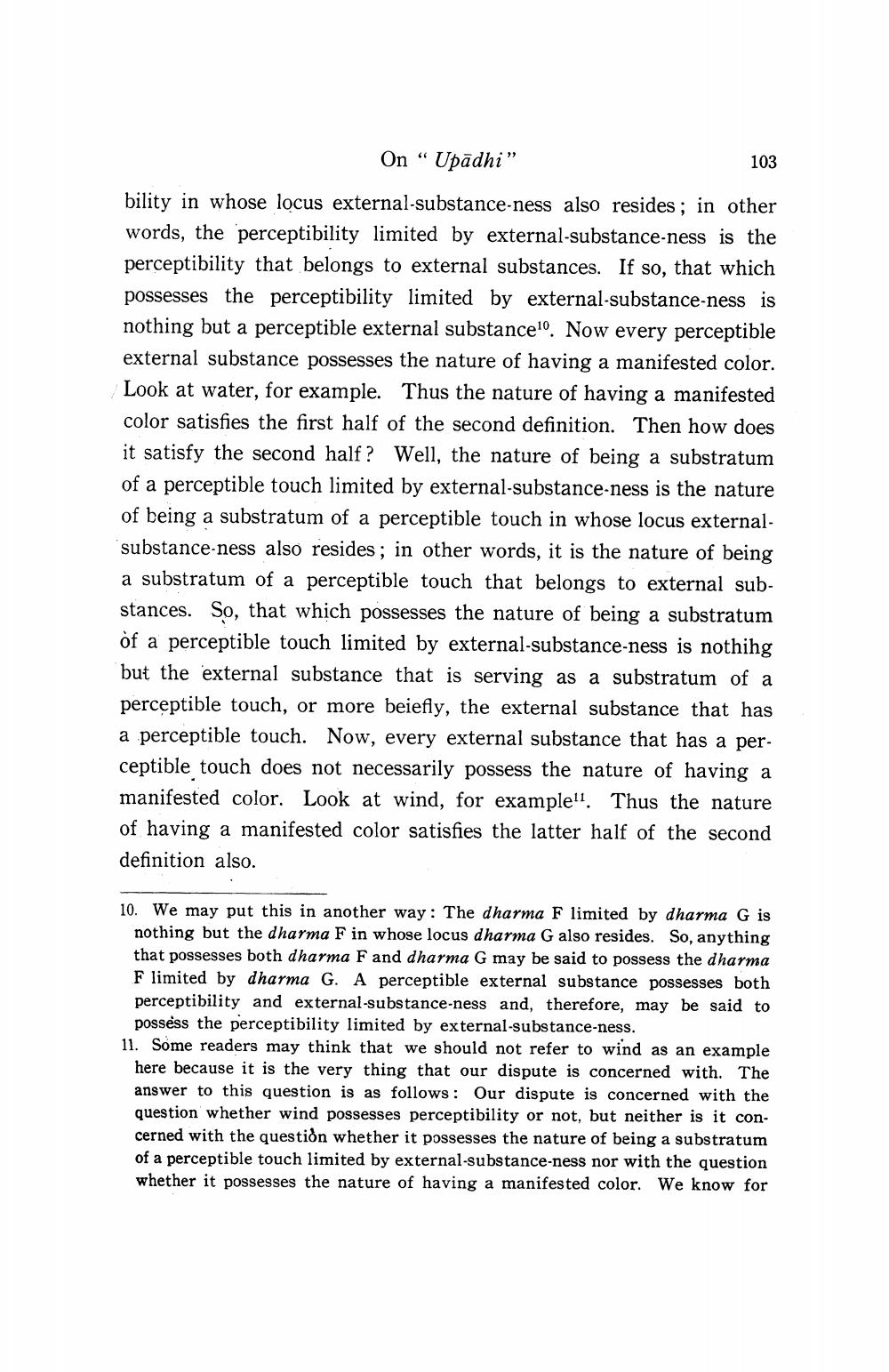Book Title: On Upadhi Author(s): Hidenori Kitagawa Publisher: Hidenori Kitagawa View full book textPage 7
________________ On “ Upādhi” 103 bility in whose locus external-substance-ness also resides; in other words, the perceptibility limited by external-substance-ness is the perceptibility that belongs to external substances. If so, that which possesses the perceptibility limited by external-substance-ness is nothing but a perceptible external substance. Now every perceptible external substance possesses the nature of having a manifested color. Look at water, for example. Thus the nature of having a manifested color satisfies the first half of the second definition. Then how does it satisfy the second half? Well, the nature of being a substratum of a perceptible touch limited by external-substance-ness is the nature of being a substratum of a perceptible touch in whose locus external. substance-ness also resides; in other words, it is the nature of being a substratum of a perceptible touch that belongs to external substances. So, that which possesses the nature of being a substratum of a perceptible touch limited by external-substance-ness is nothing but the external substance that is serving as a substratum of a perceptible touch, or more beiefly, the external substance that has a perceptible touch. Now, every external substance that has a perceptible touch does not necessarily possess the nature of having a manifested color. Look at wind, for example'l. Thus the nature of having a manifested color satisfies the latter half of the second definition also. 10. We may put this in another way: The dharma F limited by dharma G is nothing but the dharma F in whose locus dharma G also resides. So, anything that possesses both dharma F and dharma G may be said to possess the dharma F limited by dharma G. A perceptible external substance possesses both perceptibility and external-substance-ness and, therefore, may be said to possess the perceptibility limited by external-substance-ness. 11. Some readers may think that we should not refer to wind as an example here because it is the very thing that our dispute is concerned with. The answer to this question is as follows: Our dispute is concerned with the question whether wind possesses perceptibility or not, but neither is it concerned with the question whether it possesses the nature of being a substratum of a perceptible touch limited by external-substance-ness nor with the question whether it possesses the nature of having a manifested color. We know forPage Navigation
1 ... 5 6 7 8 9 10 11 12 13
